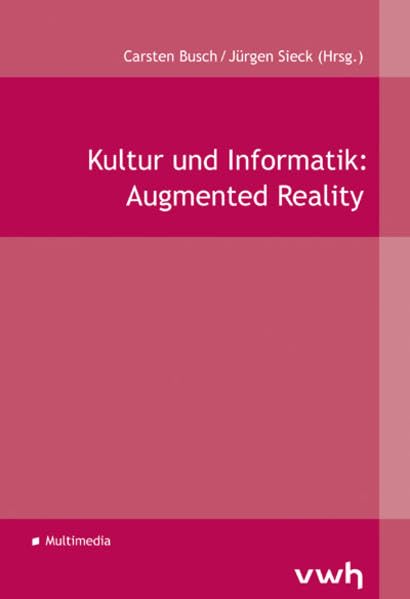publications
2024
- SAICSITInvestigating Markov Model Accuracy in Representing Student Programming BehavioursHerman Kandjimi, and Hussein SulemanIn South African Computer Science and Information Systems Research Trends , Jul 2024
Problem-solving skills are an integral component within the computer science field. Due to the diversity brought about by students following different learning and programming behaviours, it is challenging to track and identify when students get overwhelmed while writing programs. When students are overwhelmed, they are unable to complete learning objectives on time and follow prescribed pathways, depriving them of the opportunity to learn new concepts. In this paper, we developed and evaluated the quality of Markov models that encode student programming behaviours based on the evolution of source code submissions during formative practical assignments. In doing so, we use Abstract Syntax Trees (ASTs) extracted from the source code, which are used for clustering similar submissions and tracking students’ progressive approaches within the Markov models. An approach based on MinHashLSH is presented that works on AST nodes as input to emphasise structural similarity and related programming approaches. As such, the effectiveness of the Modified MinHashLSH approach is based on the clusters that make up the Markov model.
@inproceedings{10.1007/978-3-031-64881-6_4, author = {Kandjimi, Herman and Suleman, Hussein}, editor = {Gerber, Aurona}, title = {Investigating Markov Model Accuracy in Representing Student Programming Behaviours}, booktitle = {South African Computer Science and Information Systems Research Trends}, year = {2024}, publisher = {Springer Nature Switzerland}, pages = {62--78}, month = jul, doi = {10.1007/978-3-031-64881-6_4}, url = {https://doi.org/10.1007/978-3-031-64881-6_4}, isbn = {978-3-031-64881-6} }
2023
- ICISETDesigning a supervisory Real-Time Tracking system for Namibian childrenAgostinho Tenente Da Silva , and Herman KandjimiSocial Science Research Network, Jan 2023
Child-based disappearances; abuse and suicides are still a predominant dilemma in Namibia, with the majority of the cases resulting from poor parental supervision. Accordingly, there is a need for alternative ways to supervise children, especially during outdoor activities where the chances of them wandering far from home are quite high. The immediate objective of this research was to design and develop an android-based supervisory tracking system for children in Namibia, as a means to improve parental supervision. In addition to the geo-tracking component, an audio sentiment analysis features to predict the likely hood of depression signs in children was integrated. This study used spatial data, like global position system (GPS) coordinates and utilized text-based data provided by Google’s speech-to-text feature. The GPS coordinates were captured using an inbuilt GPS module within the tracking device. Keywords: Child tracking system, real-time remote tracking, natural processing language, software design
@article{da-silva-2023, author = {Da Silva, Agostinho Tenente and Kandjimi, Herman}, journal = {Social Science Research Network}, month = jan, title = {{Designing a supervisory Real-Time Tracking system for Namibian children}}, year = {2023}, doi = {10.2139/ssrn.4331808}, url = {https://doi.org/10.2139/ssrn.4331808} }
2021
- DSMLAI 21Attendance System with Emotion Detection: A case study with CNN and OpenCVH. Kandjimi, A. Srivastava , and H. MuyingiACM International Conference Proceeding Series, Jan 2021
Multinational companies (MNC) take care of employees by taking feedback, in which each day’s mood counts as a trivial factor. Traditional and common methods of collecting data are manual and take up employees productive time to complete. There is a solution that can help automate this process. This study explores the implementation of Artificial Intelligence (AI) and Machine Learning (ML) models in an automated emotion and attendance system. The system is designed in such a way that companies can generate employee’s mood/emotion data by facial recognition through a customized Convolutional Neural Network (CNN) model. The companies can place a camera on the entering and exit of each Block/Floor. Cameras can capture the image and provide input to OpenCV for easy integration and taking attendance. The captured image can further be used for mood detection and store in the database for each employee. The Human Resources (HR) department can track feedback from employee’s facial expressions on the same day for social events, hikes, seminars, and new initiatives.
@article{Kandjimi2021, title = {Attendance System with Emotion Detection: A case study with CNN and OpenCV}, journal = {ACM International Conference Proceeding Series}, year = {2021}, pages = {53-56}, url = {https://doi.org/10.1145/3484824.3484896}, author = {Kandjimi, H. and Srivastava, A. and Muyingi, H.} }
2019
-
 Development and usability evaluation of a mobile-based cross-platform interactive museum guide-iMuseum.Herman KandjimiNamibia University of Science and Technology , Aug 2019
Development and usability evaluation of a mobile-based cross-platform interactive museum guide-iMuseum.Herman KandjimiNamibia University of Science and Technology , Aug 2019@mastersthesis{kandjimi2019development, title = {Development and usability evaluation of a mobile-based cross-platform interactive museum guide-iMuseum.}, author = {Kandjimi, Herman}, month = aug, year = {2019}, school = {Namibia University of Science and Technology}, url = {https://ir.nust.na/bitstream/10628/749/1/HK%20Thesis%20POST%20SubmissionV1.pdf}, }
2018
-
 Ionic and AngularJS: Frameworks for Developing Interactive & Location- based Museum Hybrid Systems.Herman Kandjimi, and Hyppolyte MuyingiMay 2018
Ionic and AngularJS: Frameworks for Developing Interactive & Location- based Museum Hybrid Systems.Herman Kandjimi, and Hyppolyte MuyingiMay 2018@book{kandjimi-2018, author = {Kandjimi, Herman and Muyingi, Hyppolyte}, booktitle = {Kultur und Informatik: Hybrid Systems }, month = may, pages = {239--252}, title = {{Ionic and AngularJS: Frameworks for Developing Interactive & Location- based Museum Hybrid Systems.}}, year = {2018}, }
2016
-
 A Usability Study Of Indoor Micro Location-Aware Interactive Guide Application In Museum: Case Of Namibian Independence MuseumHerman Kandjimi, Hippolyte Muyingi , and Juergen SieckIn , May 2016
A Usability Study Of Indoor Micro Location-Aware Interactive Guide Application In Museum: Case Of Namibian Independence MuseumHerman Kandjimi, Hippolyte Muyingi , and Juergen SieckIn , May 2016Public participation and visitor satisfaction in museums are directly related to the experience of learning, discovery and involvement in motivating learning behaviours. In most cases visitors’ experience is highly enhanced if they get a detailed knowledge on each artefact from the museum guides and this is critical to user satisfaction; however the ratio of human guides to visitors is always grossly inadequate. The purpose of this study was to look at alternative ways to enhance visitors’ experience and satisfaction using latest wireless technologies in smart phones by providing video, audio and text format information of an iBeacon-targed artefact. A qualitative research approach followed by a constructive design, development and implementation was used in this study, with the main objective of producing an indoor location-aware interactive virtual guide prototype application that has sufficient usability qualities including ease of use, usefulness and stable transactions. This study was contextualized to Namibian museums using the Independence Memorial Museum as a test case.
@inproceedings{inproceedings, author = {Kandjimi, Herman and Muyingi, Hippolyte and Sieck, Juergen}, year = {2016}, month = may, pages = {}, title = {A Usability Study Of Indoor Micro Location-Aware Interactive Guide Application In Museum: Case Of Namibian Independence Museum} }
2015
- IRJCSA Preliminary Survey on Child Online Protection Initiatives:A Focus on Namibia .Attlee Gamundani , Fungai Bhunu Shava , Mercy Bere , and 1 more authorInternational Research Journal of Computer Science, Apr 2015
Child Online Protection is no more a new concept with the digital age permeating the different cultural and moral fibers that used to keep communities at bay. This paper contextualise the concern to the Namibia horizon only, not really concluding that, it is where such protection is needed, this is more than a world phenomenon, as ITU and many other concerned entities have been promoting awareness emphasizing the need to be on the lookout for activities children engage in when online. This paper presents a preliminary review on the level of awareness; the relevant stakeholders have, in terms of Child Online Protection. A consultative workshop was employed at the very early stage of this ongoing research, as such ; this paper will predominantly focus on the findings of the workshop’s outputs and communicate the progressive envisaged steps towards this area of research.
@article{article, author = {Gamundani, Attlee and Bhunu Shava, Fungai and Bere, Mercy and Kandjimi, Herman}, year = {2015}, month = apr, pages = {17-22}, title = {A Preliminary Survey on Child Online Protection Initiatives:A Focus on Namibia .}, volume = {2}, journal = {International Research Journal of Computer Science} }